One week from now, on September 22, 120 competitors from more than 20 countries will awake at a campsite on the northern rim of the Grand Canyon and begin the first of six stages in the 2013 Grand to Grand Ultra, carrying all their food and sleeping gear on their backs as they traverse 169 miles of desert terrain. I plan to follow the event’s daily news coverage not only to track a handful of the competitors I know doing it, but also to gain more knowledge about the event because I signed up to do it again in 2014!
One of the runners I’ll follow closely is my tentmate from last year, Lynne Hewett, a 48-year-old Australian who lives in New York and works as an ER nurse.
Lynne is the kind of friend I’d want if stranded on a desert island. I knew it the moment she squeezed a tablespoon of pus out of my pinky toe and made me laugh in the process.
We had known each other less than 48 hours, but in those two days, my feet sprouted blisters that turned dark yellow and streaked with red—sure signs of an infection. We were sitting in our tent somewhere in a remote stretch of desert near the Vermillion Cliffs, the ground outside turning to soupy reddish mud from a downpour. As Lynne watched me futilely attempt to clean my feet and lance my blisters with a dull safety pin, she said, “What are you doing?! Come here.”
She pulled out a baggie full of compact medical supplies. Using surgical scissors and alcohol swabs, she disinfected my toe, cut the skin back, and then forced all the discolored ickiness to ooze out. “You’ve got to squeeze it,” she said, and then she expertly cleaned and bandaged it.
For the rest of the week, she was the person I’d ask to tape my back and shoulders to prevent chafing, and she was the one I’d mentally latch on to for reassurance. She, like me, has a thing for horses. And she is the one who overcame the biggest challenge to her feet while laughing at herself and at the ridiculousness of the situation.
Her feet were so blistered and chafed from doing a 137-mile ultra in the Himalayas a few weeks earlier that she could not tolerate her shoes. Rather than give up, she ran/hiked the 47-mile long stage—much of it through sand—in flip flops with toe socks. Two days later, she cut up her running shoes to get her feet back in them, but one started bothering her again so much that she switched to a flip-flop on one. And still she made it to the finish.
Since we met a year ago, I’ve followed Lynne online as she attempted the extreme 6633 Ultra—350 miles in the Arctic circle, pulling all her gear in a sled—and as she crewed Lisa Smith-Batchen at the Badwater Ultra. Now she’s getting ready to return to Kanab, Utah, for the Grand to Grand, one month after doing a 100-miler. She has run ultras and stage races around the world, from the Marathon des Sables in Morocco to the South Pole Antarctica Marathon to the La Ultra in the Himalayas. I’m devoting this post to a Q&A with her because I’m so blown away by her adventures and her grit.
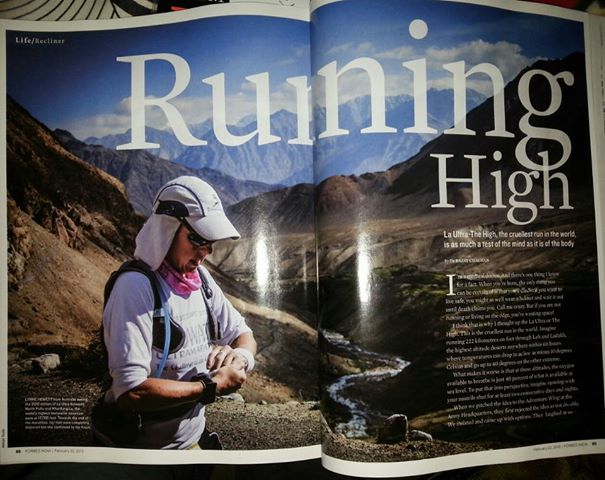
Lynne featured in a magazine story on La Ultra – The High race in 2012, which she did in 58 hours and was one of only 10 finishers.
Q: When did you start running?
A: Running for me started probably as soon as could I walk, growing up on a large sheep and wheat property 400 miles west of Sydney, Australia. If you wanted to get anywhere, you either rode your horse or ran, and riding a bike on dirt roads wasn’t that easy. I have a twin sister, and my parents just always said, “go outside and play,” and having that big of a backyard—thousands of acres—our day was always full.
Why are you going back to do the Grand to Grand again?
The G2G was so much fun—I just like the concept of being self-sufficient, and the test of finding lightweight food substitutes for the highest caloric intake that you can find. It’s a great way to see a place because usually in the 100-mile races you are just moving to finish, whereas in the stage races, you can finish your required distances each day and then spend time to reflect on your day and also interact with lots of interesting people.
Are you planning to do anything differently this time around, such as different training, gear or pacing?
This time my training has been pretty much non-existent—my crazy work schedule between two full-time jobs hasn’t actually allowed me to get any decent training days in—so my 100-miler [the August 17 Beast of Burden 100M in New York] was my last training day. I have made some minor changes to my pack—different food substitutes and clothing. The biggest change is about my feet. During last year’s G2G, they were pretty beaten up, mainly because of a 137-mile race four weeks prior to G2G, which resulted in some of the worst blisters I’ve ever had, and I didn’t give myself enough time for them to heal. This was only exacerbated when I started G2G last year running in the sand with not very good gaiters and therefore ended up spending a great deal of the running in flip-flops—somewhat doable to finish, but to do a decent time, not so much :-).
Take me back to March when you did the 6633 Ultra. What were some of the most insane and challenging moments of running through the snow in arctic temperatures while pulling a sled of your gear?
Of all my athletic races and events, 6633 Ultra has been the most challenging, fun and crazy race I’ve taken on.
In 2012, myself and some of the runners who finished the La Ultra High 137-mile highest ultra in the world—at the award night with some alcoholic beverages in hand—started talking about what race everyone was going to do next. One of the guys mentioned how difficult the Arctic Ultra 6633 is. Over the past six years since the race first started, only 11 people have finished. Instantly I became intrigued.
It’s a 350-mile, self-sufficient nonstop race up in the Arctic Circle, longitude and latitude 6633. Temperatures go down to sometimes -35 below, and Arctic winds can turn and flip over a semi trailer on the long stretch of the Klondike Highway. What an adventure!
The ability to be self-sufficient is such an amazing strength and ability if you’re able to do it. My favorite book to read is Endurance: Shackleton’s Incredible Voyageabout the legendary exploration to Antarctica and I feel one of the greatest survival stories.
For the race, three-quarters of the entrants were from the UK—Irish, Scots, Welsh—and a couple of Europeans and two Aussies. All I did was laugh the whole time. Their humor and comments, “We’re all going to die up here,” made me acknowledge I probably should have had a psych consult before I came, and since I didn’t, why not just accept my insanity?
You are given eight days to finish a total of 350 miles to the tip of the Arctic to a remote tiny hamlet called Tuktoyaktuk. Every day, maybe twice a day if we were lucky, we saw the support race organizers, but for the most part, you spent the day pulling your sled with all your required food and gear by yourself and sometimes next to other runners if you decided to have company.
The most important aspect was the ability to start your fuel in the snow with such cold and frigid temperatures at night. You were required to have survival equipment should something happen, and within 24 hours you would eventually get help.
I was going so well through the first, second, third and fourth day checkpoints. I was hearing about the many dropouts of the race—the last women stopped at the mile 120 checkpoint, so I started Day 5 knowing I was the only woman left, which made me kind of proud that I had lasted this long in an environment I had never experienced before. With a 50 mph headwind, nonstop snow and winds starting at 6 am in the morning—allowing me only a small diameter of visual field because of how frigid the winds were—it was by far the worst day as I was constantly putting my hands on my eyelashes to defrost them because they were freezing with every blink.
How far did you go before dropping at the 6633, and what made you drop?
I starting finding myself falling into a kind of vicious cycle—an absolute no-no for the Arctic terrain—where I was not moving very far because of the winds, and yet when I stopped to eat, I was taking too long to get my food out and then eat, so I would stop short of eating to get moving again to keep warm but knowing I didn’t consume enough calories as fuel.
By early evening when I tried to start my fire to boil water for my MRE, thinking a hot meal might help, it wouldn’t catch a light because my can of fuel was frozen even though I kept it near my skin in my jacket.
That evening I saw one of the support crew and they asked me if was I all right, and I said come back in six hours around midnight and I will let you know—but I couldn’t really move my hands very fast. Later I found out I had the start of frost exposure in my fingers, and so I started to not bother eating because my manual dexterity was lacking when I tried to get gear out of my rucksack in my sled.
Around 2 a.m. I was just staggering all over the road, so I decided I was just going to put my bivvy bag out in the snow, climb into my sleeping bag, and sleep until morning. I would figure out after some sleep what I was going to do as far as continuing.
Sometime later I heard a runner go past me, and he asked, was I OK? I told him if he got to the next checkpoint, tell them to come and get me as I wasn’t doing so well—meaning I couldn’t start my fire with my fuel, hadn’t eaten much for almost 24 hours and felt tired and weak.
One of the rules that they drummed into us through all the Arctic lectures we had at the hotel was: never climb into your sleeping system in your wet jacket because you wouldn’t be able to get the heat generated between you and the down in your sleeping bag. I was so tired and weak at that point, I just climbed in and tried to curl up in a ball. I didn’t feel scared, just so exhausted, and again, after reading Shackleton, I knew I was OK because I was nowhere near as bad as those guys in the cold weather.
In conclusion to this question, I was five miles near the 205 mile checkpoint, so 200 miles out of 350 was as far as I got. I was the 17th runner to drop out of the 26 starters, and I was happy with as far as I had gotten being a newby to this kind of environment.
Lots of lessons learned, and if at first you don’t succeed, try, try again. After the race, I left the majority of my gear at the hotel in Whitehorse and will be back again for more insanity and hoping, with the wisdom I acquired, to complete “THE HARDEST and COLDEST Ultra in the WORLD” next April 2014.
How do you get in the miles to train for these events in NYC with your ER job?
Mileage for me over the past couple of years has never been productive, meaning I don’t train running—my work life involves leaving at 7 a.m. from home and getting back around 8:30 p.m. I’m on my feet for 12-hour days between both jobs, seven days a week. I recently purchased a “Fitbit” monitorwrist band that calculates mileage, steps, calories, etc. I was shocked that I average between 8 to 10 miles a day walking; for the week, it’s anywhere between 40 to 70 miles. Most of my day at work is standing up at my computer, mainly because the patients in the ER take my chair.
Dean Karnazes always said that to lose weight and maintain the ability to last through ultra distances, just stand all day. It certainly isn’t fiction but absolutely fact. I wish I could train, but if I am going to go to exotic race locations and take on incredible race distances like the Himalayas or Arctic 350-miler, I have to work a lot to pay for them. I certainly don’t mind because my philosophy is I have no idea how long I will be on this planet, so I want to go and see as much of it as I can before I won’t be able to.
Good luck Lynne! Check out this trailer for the G2G. I can’t wait to go back next year.

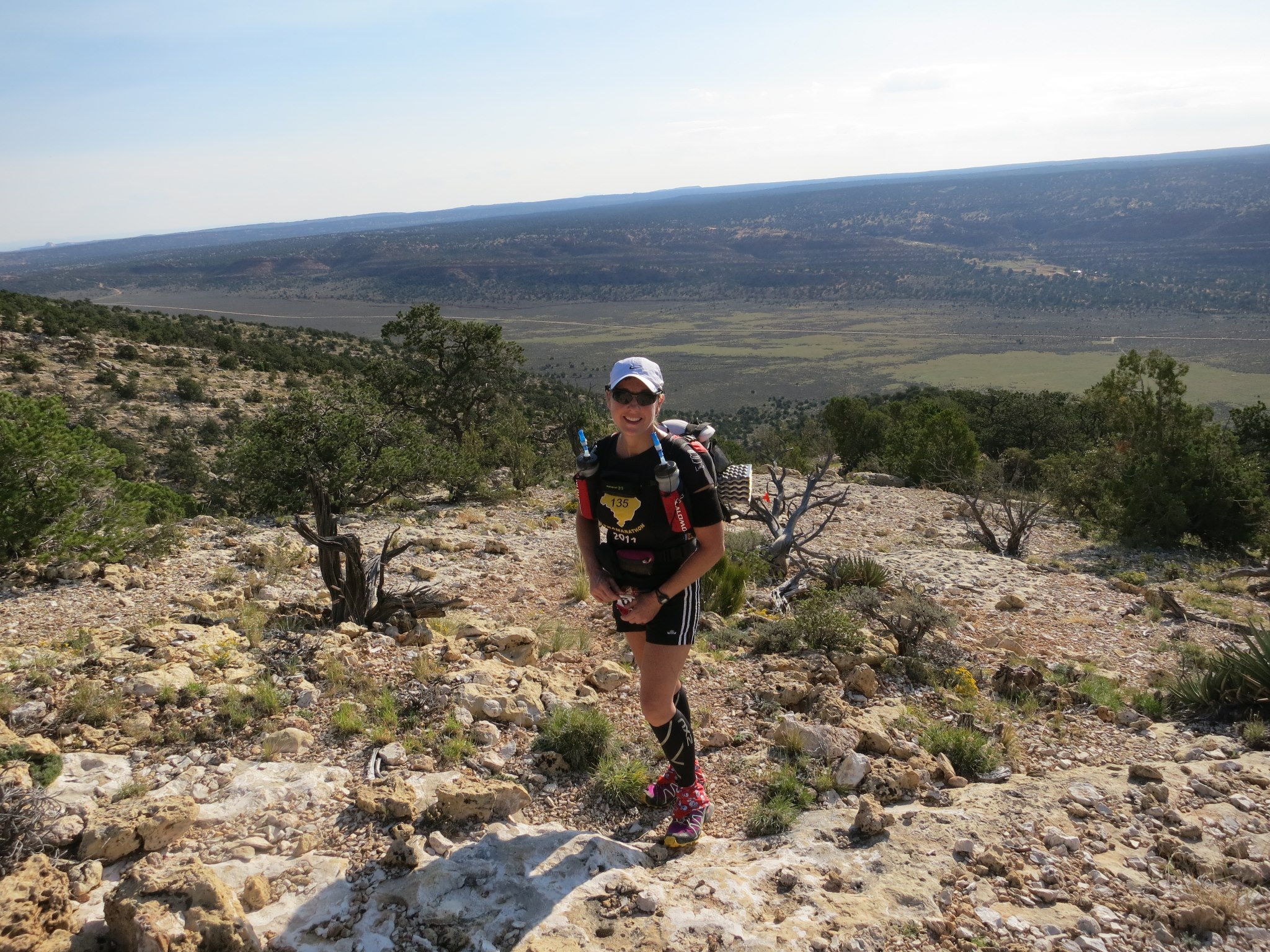
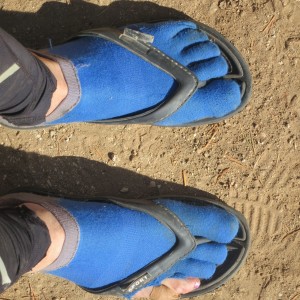
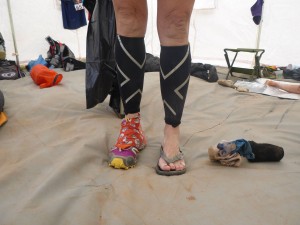
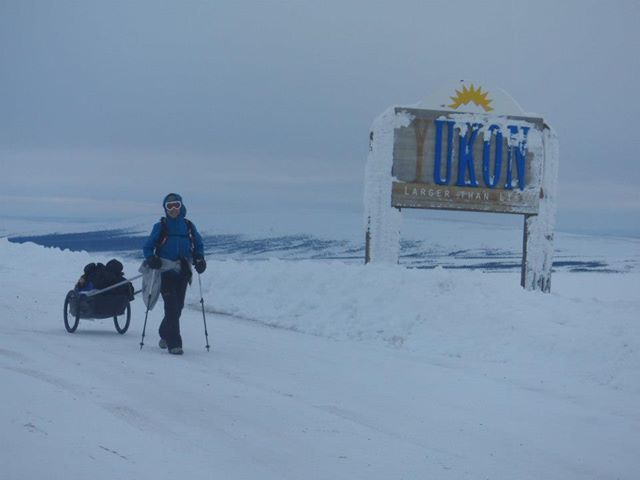
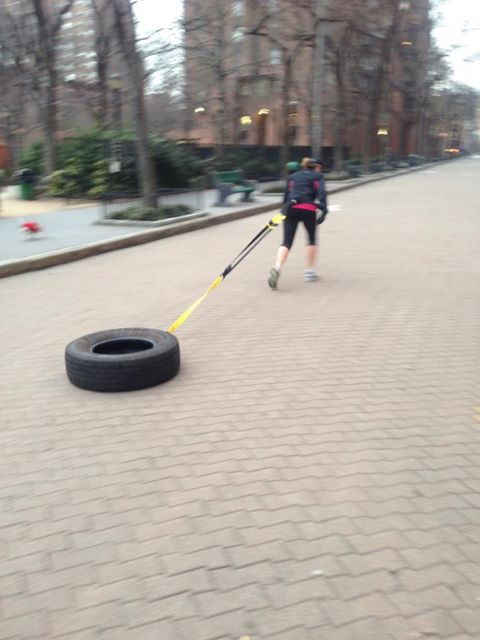
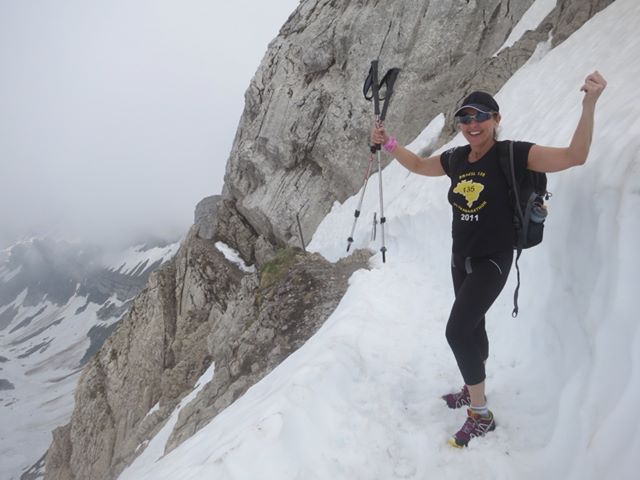
Totally wow!